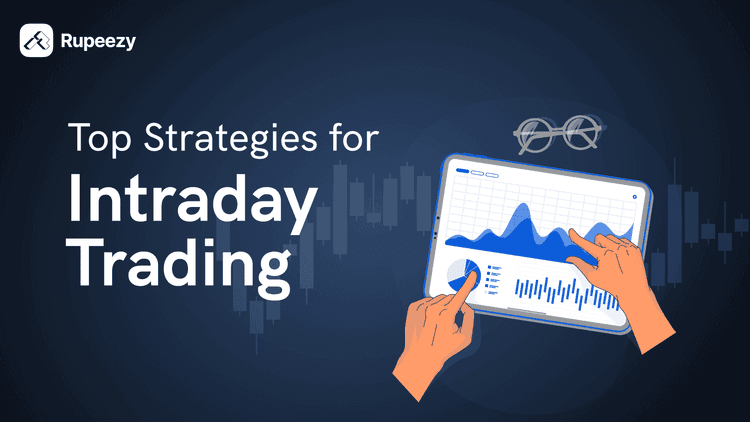What Is Market Coupling? Understand How it Affects IEX


00:00 / 00:00
The power sector is one of the most important sectors on which all the industries and households depend. Therefore, any fluctuation in this sector can impact the overall profitability and operational cost of other sectors to a great extent.
To address inefficiencies in power trading and promote competitive pricing. The government and regulators are exploring a mechanism known as market coupling. This concept aims to integrate multiple power exchanges for a uniform market-clearing price. This also includes the Indian Energy Exchange (IEX).
So, let us understand the concept of market coupling over here in this guide in detail. To begin with, let us understand the market coupling meaning.
What is Market Coupling
Market coupling is a system that brings together all buy and sell orders from different power exchanges into a single pool. Instead of each exchange setting its own price separately, this mechanism helps determine one common market-clearing price by combining the overall demand and supply.
To understand this, you must first know that this will help in better price trading of electricity. It will be irrespective of the listing on the exchange. In India, this would involve coordinating major platforms like the Indian Energy Exchange (IEX), PXIL, and HPX through a central system.
The idea is to reduce price variation across exchanges, improve competition, and ensure electricity flows to where it is needed most. This unified approach can lead to better price discovery, more transparency, and a stronger power market for both suppliers and buyers.
Key Features of Market Coupling
To understand the potential impact of market coupling on India’s power sector, it’s important to first look at its core features. These characteristics are what make market coupling a preferred model in many global electricity markets.
Single Market Clearing Price: All power exchanges feed their bids into a common system that calculates one uniform price. This ensures that buyers and sellers across different platforms trade at the most efficient rate.
Centralized Clearing Mechanism: A central agency collects bids from all exchanges, matches supply with demand, and settles trades. This avoids duplication and maintains price consistency.
Efficient Power Flow: Market coupling helps ensure electricity flows from surplus to deficit regions based on real-time demand and availability. It supports optimal use of transmission capacity.
Exchange-Neutral Trading: Traders are no longer limited by which exchange they use. The platform becomes less important than the trade itself, allowing for a level playing field.
Enhanced Transparency and Competition: With all trades routed through a central price discovery process, there is greater visibility into pricing and participation. This encourages fair competition among participants.
Why India Is Moving Toward Market Coupling
India’s electricity market is evolving, and market coupling is emerging as a key reform to bring greater efficiency, transparency, and fairness. Currently, multiple power exchanges like IEX, PXIL, and HPX operate independently, often leading to price differences, liquidity fragmentation, and suboptimal use of the power grid.
To address these challenges, the Central Electricity Regulatory Commission (CERC) has proposed a structured rollout of market coupling.
Here’s a breakdown of why this transition is being pushed forward:
1. Unified Price Discovery
CERC aims to establish a single market-clearing price across exchanges for the day-ahead and real-time segments. This will eliminate price discrepancies and bring uniformity to trading outcomes.
2. Better Use of Transmission Infrastructure
Market coupling allows electricity to flow where it is needed most by integrating bids and supply from all platforms. This ensures that the country’s transmission capacity is used more efficiently.
3. Enhanced Economic Surplus
By aggregating demand and supply across all exchanges, market coupling maximizes value for buyers and sellers. This leads to better price discovery and fairer outcomes.
4. Phased Implementation
The reform will begin with the day-ahead market, which is scheduled to shift to a round-robin market coupling model by January 2026. Exchanges will take turns acting as the Market Coupling Operator, while Grid-India will serve as the audit and backup body.
5. Pilot Insights and Operational Readiness
A four-month pilot conducted from December 2024 to March 2025 showed:
Rs.38 crore in welfare gains in the day-ahead segment
Rs.72 lakh in real-time market improvements
Rs.1.4 crore per day in savings when integrated with Security Constrained Economic Dispatch (SCED)
These gains came with the caveat that harmonisation of bidding formats and algorithms is necessary for long-term success.
Next Steps
Grid-India is developing software for upcoming pilots in the term-ahead segment. Exchanges have been asked to share real-time market data and participate in consultations to support final implementation. Regulatory amendments are also being drafted.
This reform signals India’s commitment to creating a more integrated and globally aligned power market while safeguarding efficiency and competitiveness.
What Market Coupling Means for IEX
As India moves toward market coupling, the Indian Energy Exchange (IEX) finds itself at a critical crossroads. For years, IEX has held a dominant position in the spot power market, largely due to its role in price discovery and deep liquidity. However, under the new framework, IEX will no longer have exclusive control over how prices are set.
Here’s what market coupling means for IEX going forward:
1. Loss of Price-Setting Power
In a coupled market, price discovery will be handled centrally using aggregate data from all exchanges. IEX’s platform will function only as a bidding window, reducing its influence over pricing.
2. Increased Competitive Pressure
With uniform pricing and shared access, the value proposition of trading on IEX alone may diminish. Other exchanges will operate on equal footing in the price discovery process.
3. Impact on Volumes and Margins
Lower differentiation could affect trading volumes and reduce the platform’s revenue. The exchange may see tighter margins as competition intensifies.
4. Negative Market Reaction
Following the CERC announcement, analysts revised their outlook on IEX. One major brokerage cut its price target from Rs.160 to Rs.122, citing risks from the Indian energy exchange market coupling and its potential impact on IEX’s growth and profitability.
While IEX remains a key infrastructure player, it will need to adapt its strategy to maintain relevance in a system where centralized operations reduce individual platform dominance. This shift could also open doors for innovation, collaboration, and new service offerings as the market stabilises under the new framework.
How Market Coupling Works in India
For buyers and sellers in the electricity market, market coupling changes how prices are discovered, not how bids are placed. The goal is to offer a more transparent, efficient, and fair pricing system without disrupting the trading experience.
Here’s how it works from a participant’s perspective:
Same Bidding Process: Buyers and sellers continue placing bids on their preferred power exchange, such as IEX, PXIL, or HPX. No change is required in their bidding method.
Central Price Discovery: All bids from all exchanges are pooled and processed by a central system operated by the Market Coupling Operator (MCO). This system calculates a single market-clearing price based on combined demand and supply.
Fair Allocation of Trades: Once the clearing price is set, trades are allocated across platforms proportionately. This ensures equal opportunity and better access to competitive pricing.
Oversight by Grid-India: To maintain trust and neutrality, Grid-India oversees the process as a backup and audit body.
For participants, market coupling ensures they always receive the best possible price in the market, regardless of the trading app or platform they use. It enhances competition and levels the playing field for all traders.
Pros and Cons of Market Coupling
Like any major reform, market coupling brings both benefits and challenges. While it aims to improve the efficiency of electricity markets, it also introduces new dynamics that need to be carefully managed.
Pros of Market Coupling
Enables a single market-clearing price across exchanges
Improves transparency in electricity trading
Ensures optimal use of transmission infrastructure
Increases market liquidity and participation
Encourages competition based on service, not pricing advantage
Cons of Market Coupling
Reduces pricing control for individual exchanges like IEX
Requires complex integration of systems and algorithms
May create short-term confusion during transition
Full implementation may face regulatory or technical delays
Conclusion
Market coupling is set to reshape electricity trading in India by introducing a single, transparent pricing system across all power exchanges. It promises fairer access, better price discovery, and more efficient use of grid infrastructure.
While platforms like IEX may see a reduced role in price setting, the overall market stands to gain in the long run. For investors and traders, understanding these changes is key.
Explore smart investment opportunities in the evolving power sector with Rupeezy, your partner in informed, confident investing.
FAQs
Q1. Will market coupling affect electricity prices for end consumers?
While market coupling operates at the exchange level, its efficiency can influence wholesale electricity costs. Over time, improved price discovery may help stabilize rates, but the impact on retail consumer bills depends on state-level tariffs and distribution company policies.
Q2. Can participants choose which exchange to trade on after market coupling?
Yes, buyers and sellers can still choose their preferred exchange. Market coupling only standardizes the price and allocation mechanism. The user experience and platform features may still vary across exchanges.
Q3. What happens if one exchange faces a technical issue during coupling?
Grid-India will act as a backup and audit operator. If one exchange encounters a problem, trades can still proceed through others, ensuring system reliability and minimal disruption.
Q4. Will small traders or new participants benefit from market coupling?
Yes. Market coupling creates a level playing field by offering equal access to price discovery, which can benefit smaller players who may have faced pricing disadvantages earlier.
Q5. Is India the first country to adopt market coupling in power markets?
No. Market coupling is already in use in regions like Europe, where it has successfully improved cross-border electricity trading and grid efficiency. India is adapting a similar model to suit its domestic power market structure.
The content on this blog is for educational purposes only and should not be considered investment advice. While we strive for accuracy, some information may contain errors or delays in updates.
Mentions of stocks or investment products are solely for informational purposes and do not constitute recommendations. Investors should conduct their own research before making any decisions.
Investing in financial markets are subject to market risks, and past performance does not guarantee future results. It is advisable to consult a qualified financial professional, review official documents, and verify information independently before making investment decisions.
Open Rupeezy account now. It is free and 100% secure.
Start Stock InvestmentAll Category









